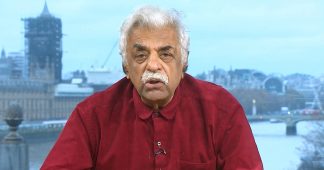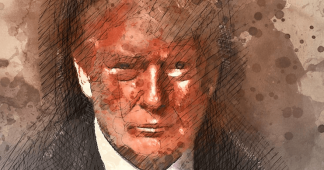By Dimitris Lampos
http://www.dimitrislampos.gr
Che was not simply a consistent revolutionary. He was much more than that. He was the conscience of social revolution. That’s why he still lives as a spiritual entity. Actually, many people got to know him after his death. A few familiarized themselves with him through his writings and many through the praise others heaped on him or through their aphorisms. This means that Che still lives and develops in our conscience as well as in the collective consciousness of humanity that is striving for the sake of New Man, for a better world. As the “bosses”, the spheres of influence and the would-be rulers of this dark world do all they can to make us forget about him; in other words, to stop “being realistic and fighting for the impossible”. Che, imitating Marx, who appeared in Soho, decided to appear at Exarcheia with this gripping theatrical monologue.
I’d been mulling over the idea of writing about Ernesto Rafael Guevara de la Serna, or Ernesto Guevara, or the legendary Che, for many years, but for a long period it wouldn’t find its right expression or form until I got hold of Howard Zinn’s book entitled Marx in Soho, which was so magnificently made into a Greek theatrical play by Angelos Antonopoulos. So, the idea took on its right form and threw in its lot with the rest of the theatrical monologues of historic persons who made their mark on humanity.
As was to be expected, no one’s life and work can fit in a single book of this scope, let alone Che’s chequered life, multi-layered work and revolutionary vision of a better world—a world of social equality, self-management, dignity and humanism.
That’s why I selected what I thought were the most important snapshots of his life and, as I have been toiling away at them since 2011, I hereby present them at the beginning of 2021 as images of a life through a play that takes leaps, blazes a trail and delves into his personal story as well as into the history of Cuba and humanity at large.
The difficult thing about Che—for those who would like to write about him—is trying to find the right angle from which to study him, for Che doesn’t stand before us as a boulder, but lives among us as a Pegasus who gallops to the future nonstop and, unless you realise that, you end up describing a boulder or identifying with your Pegasus. To avoid that, you only have one choice: to read as much as you can about Che, but finally understand him through his own books, texts, words and images and try to present him as a living, present, thinking and acting person all this time since he has been murdered, so that you won’t write a historical text, an obituary, either demonising or idealising him. Your aim should be to chat with him, letting him take centre stage because what we’re after is his opinion about the past, the present and the future.
A sort Curriculum Vitae
Dimitris Lambos was born in Bellin in 1978. He studied BA in Economics and MSc in International Economics at the University of Esse. He worked as a journalist, economic researcher, in the banking sector. He writes poetry, literature and music. His main works are: Story of a ‘misanthrope’, poetry, PARASKINIO. Don ‘t be afraid of the Herd, music vinyl, LYRA. The Motionless City, KOYKIDA. Lampons, songs and laments for the 21st century, vinyl, METRONOMOS, Against Cronus, poetry, KOUKKIDA, Uprising, music, vinyl. PROTASIS, …and Che at Exarcheia, Theater monolog, KOUKKIDA.He has been writing, editing and presenting the radio show BRAINESANCE since 2010
We remind our readers that publication of articles on our site does not mean that we agree with what is written. Our policy is to publish anything which we consider of interest, so as to assist our readers in forming their opinions. Sometimes we even publish articles with which we totally disagree, since we believe it is important for our readers to be informed on as wide a spectrum of views as possible.











